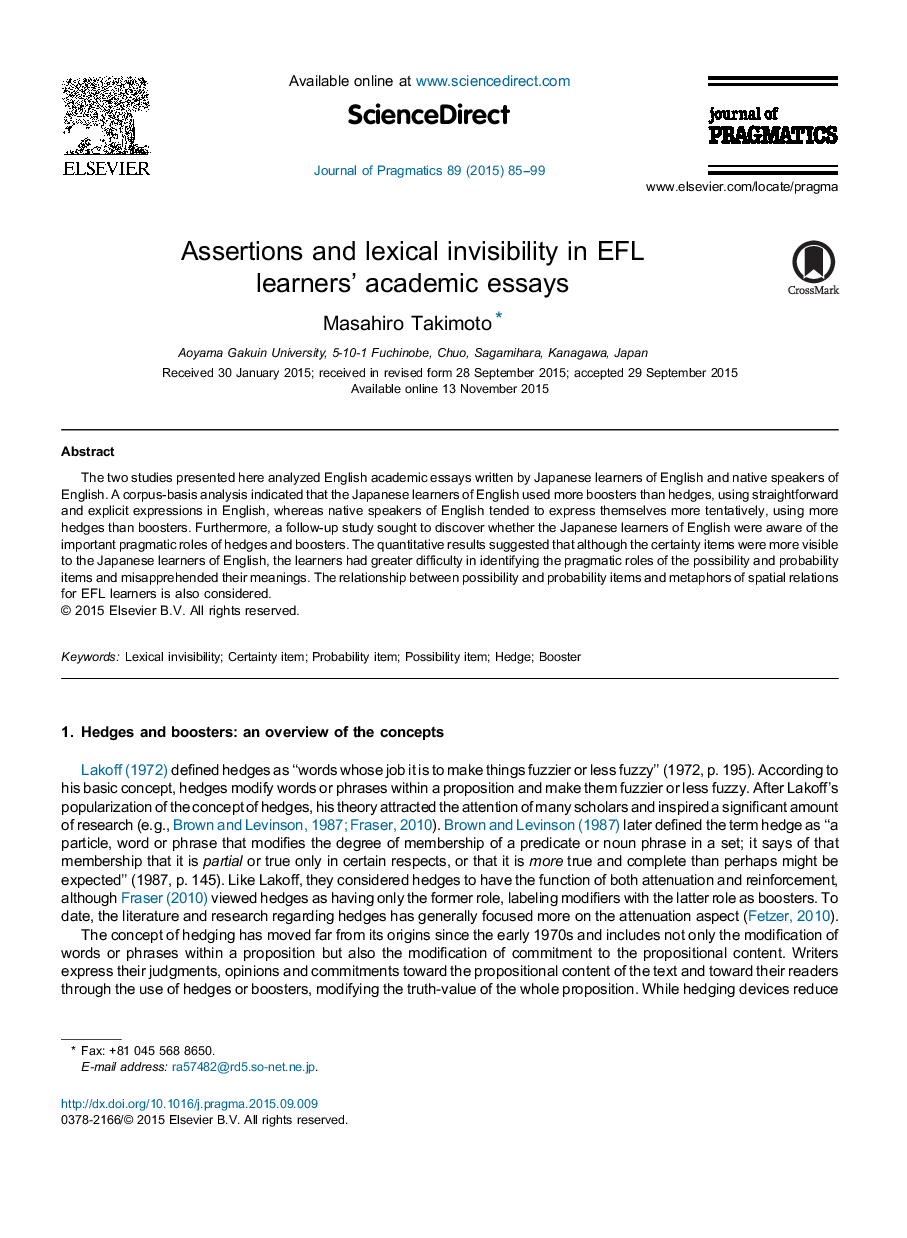| Article ID | Journal | Published Year | Pages | File Type |
|---|---|---|---|---|
| 932554 | Journal of Pragmatics | 2015 | 15 Pages |
•The EFL learners employed more certainty items than probable or possibility items.•The EFL learners had difficulty in identifying the possibility and probability items.•The EFL learners chose to link themselves explicitly with their ideas.•The EFL learners had difficulty in identifying the subjective–objective dimension.
The two studies presented here analyzed English academic essays written by Japanese learners of English and native speakers of English. A corpus-basis analysis indicated that the Japanese learners of English used more boosters than hedges, using straightforward and explicit expressions in English, whereas native speakers of English tended to express themselves more tentatively, using more hedges than boosters. Furthermore, a follow-up study sought to discover whether the Japanese learners of English were aware of the important pragmatic roles of hedges and boosters. The quantitative results suggested that although the certainty items were more visible to the Japanese learners of English, the learners had greater difficulty in identifying the pragmatic roles of the possibility and probability items and misapprehended their meanings. The relationship between possibility and probability items and metaphors of spatial relations for EFL learners is also considered.
